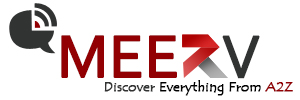WordPress Translation: Make a Multilingual Site

In our globalized world, a multilingual website is no longer a luxury, but a necessity for branches and people who want to reach a very much assorted crowd. Whether you have a blog, an e-commerce site, or a corporate website, multilingual content improves the user experience and increases your audience. One of the most popular content management systems (CMS) available, WordPress offers tons of tools and add-ons to help you create a multilingual site. So, in this article, we will go through step by step guide on how to build a multilingual website in WordPress.
Build a Multilingual Website – Why?
Now that we know why a Spanish English site is worth the effort, let’s get into the ugly details.
Broader Audience Reach: Having a multilingual website enables you to target users from various linguistic backgrounds, making your content available to a global audience.
Enhanced User Experience and Engagement — Users retain and bond with content better if presented in their native tongue.
SEO Benefits: Google loves localized content. It will help your website to rank for region-specific searches.
Most websites are Monolingual. Competitive advantage. Different languages give you direction over competitors.
Enhanced Sales: E-commerce sites see improved sales, as it caters to foreign customers.
How to Build a Multilingual Site in WordPress: A Free Step-by-Step Guide
Select a Suitable Multilingual Strategy
The two main ways to do so is compiling multilingual in WordPress:
- Manual Translation : This is to be highly accurate and culturally relevant.
- Machine Translation: Automatically translating content using AI-based tools. Though more expedient, it could need a manual clean-up for precision.
Choose an Appropriate Multilingual Plugin
Here’s the thing though — WordPress does not come met with in-built multilingual support, but there are a good number of plugins to help with that. Popular options include:
Use Plugin WPML (WordPress Multilingual Plugin) : For a premium plugin which excellent features such as content translation, multilingual SEO and compatibility with most themes.
- Polylang: A free, user-friendly plugin that lets you create multilingual posts, pages and categories.
- Weg lot: A cloud-based translation solution that automatically translates your website. Integrates seamlessly with WordPress.
- Translate Press: This lets you translate your site directly from the front end, with real-time previews.
Install and Configure Your Plugin of Choice
Below is a general process to install a multilingual plugin:
- Adding the plugin: Head to your WordPress dashboard, find “Plugins > Add New,” search for the relevant plugin, and install it.
- Activate The Plugin: On installation, click on “Activate.”
- Set up the plugin: Use the setup wizard to select your default language and to add more target ones.
Add Translations
After you’ve configured your plugin, it’s time to translate your site’s content:
- Custom Post Types and Taxonomies: If you’re working with custom post types or taxonomies, many plugins let you create translations for them as well. For example, WPML will generate duplicates of the post for each language.
- Menus: Translate your navigation menus for a seamless user experience across languages.
- Widgets: Certain plugins enable you to translate widget contents or display widgets based on the language that the user chooses.
- Plugins and Themes: Convert the text in themes and other plugins using plugins like WPML String Translation or Translate Press.
Enable Language Switching
It means, give them an option to choose language of their preference by adding a language switcher to your site. This can be done through:
- Navigation Menus: Many of the plugins allow adding links for the language switcher to your main menu.
- Widgets: Add a language switcher widget to your sidebar or footer;
- Custom buttons: If desired, style your language selector using CSS and HTML
Optimize for Multilingual SEO
However, for your multilingual website to be search-engine friendly, keep these best practices for SEO in mind:
Href lang Tags, HTML tags that specify a webpage’s language and region-targeting, so the correct version is presented to searchers.
- Translated URLs: Use language-specific subdomains (e.g., en. example. com), second-level domains (e.g., example. com/en/) or TLDs (e.g., example. fr) for translated content.
- Localized keywords: Keywords from research in all targeted languages are expected.
- Meta Descriptions: If you are about to translate meta descriptions · and titles of your pages so that you show up better in search results
Multilingual Website Testing
Test your site’s functionality in the multilingual setting before going live:
- Language Switcher: Test the language switcher across all pages.
- Content Accuracy: Verify that every single translation is appropriate grammatically and provides the proper context.
- Steps to Improve your Site’s Performance Check Page Speed: This can be done through FREE tools.
- Monitoring and Improving: Utilize tools such as Google Search Console to track and enhance your SEO performance in multiple languages.
Keep Your Multilingual Website Maintained
As you might already know, a multilingual website isn’t just a one-time project. You need to maintain it continuously:
- Update Translations: Whenever you update content in the default language, update translations too.
- Serpent Performance: Keep an eye on analytics to quantify your performance in various languages.
- Build off feedback: Learn from users to provide better translations and experience.
Common Challenges and Their Solutions
Inconsistent Translations:
Solution: Leverage professional translators or tools like Weg lot for your website translation.
Complex SEO Setup:
Follow Multilingual SEO Best Practise & Use Plugins with Inbuilt SEO tools.
Increased Maintenance Effort:
Solution: Conduct initial inquiry for sites where the integrity of them is incomplete.
Conclusion
Whether you are a business owner or a blogger, having a WordPress multilingual website is a great investment when you want to connect with the world. Using the right plugins together with careful planning and attention to detail, you can provide a coherent language experience for your visitors. Multilingual functionality increases the usability and attractiveness of your site if you run an international business, personal blog, or even a niche-based site about tractor, etc.






